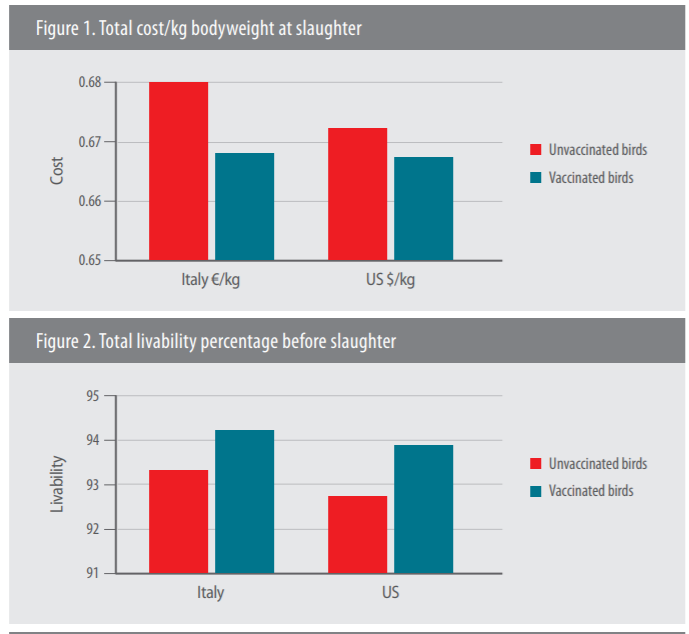



Studies in 32 million birds show returns on vaccinating broilers for E. coli
Vaccination has been shown to protect broilers from Escherichia coli infection. But is it worth the cost?In recent studies conducted in more than 32 million broiler chickens in Italy and the US, vaccination with Poulvac® E. coli yielded a positive return on investment, with vaccinated birds demonstrating consistent improvements across a range of economically important production parameters.
According to Silvia Alberti, DVM, poultry technical manager at Zoetis, E. coli has historically been considered a secondary pathogen that could easily be controlled with antibiotics used in the hatchery or broiler house. However, as the industry comes under pressure to reduce or eliminate antibiotic use, alternative approaches for managing E. coli are gaining traction.
“Vaccination is an alternative that has been proven on several occasions to protect animals against different challenges in which E. coli is involved,” she said.
“But the main question that we receive from producers is the cost-benefit, because introducing a new vaccine is a cost. Even if the focus is on prevention, they ultimately have to justify it at the end with economic benefit.”
Consistent improvement
To measure the payoff of E. coli vaccination in broilers, investigators conducted field trials in more than 32 million broiler chickens at two large integrators in Italy and the US. Approximately one-third of the chickens were given Poulvac E. coli by spray at 1 day of age, with the remainder serving as controls (Table 1).
The researchers measured various performance and economic benefits, including total production costs, feed conversion, mortality and condemnations. They then made economic comparisons between vaccinated and unvaccinated birds on each farm.

In both the Italian and US trials, vaccinated birds demonstrated improvements in feed conversion and overall livability, with fewer flocks affected by high mortality. Vaccination was also associated with reduced condemnations and lower total production costs per kilogram of bodyweight at slaughter (Table 2, Figures 1-4).
In addition, antibiotic use was lower in vaccinated birds: In the Italian trials, 53% of the unvaccinated control flocks required antibiotics to treat E. coli infection, compared to almost none of the vaccinated flocks.
According to Alberti, the sum of improvements across all measured parameters yielded a favorable return on investment for vaccination.
“The individual flock improvements we observed were small but consistent across both the Italian and US studies,” Alberti explained.
“Even if our observations weren’t sufficient in number to make a statistical analysis, this consistency between different geographical areas makes us confident that this is something very interesting for broiler producers.”















